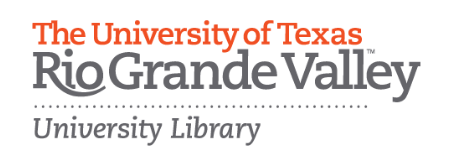Creating Open Educational Resources
The ALMS Framework
For work to be truly “open” and allow the 5R permissions, the work should be meaningfully accessible and editable. How can you ensure adopters can easily reuse, revise, remix, redistribute, and retain the work? The ALMS framework, established by Hilton, Wiley, Stein, and Johnson (2010), highlights the vital importance of offering source files and creating work in easily adoptable formats.
- ACCESS: Offer in a format that can be easily edited with freely accessible tools
- LEVEL: Format should not require advanced technical expertise to revise content
- MEANINGFUL: Offer in an editable format
- SOURCE: Source file that is accessible and editable
Using the ALMS framework offers OER creators a structure guiding the openness of the content while ensuring access to adopters in a meaningful way. When creating work, consider sharing it in several formats that permits accessible classroom adoption: MS Word, PDF, and Google doc.
Which source file do you prefer to use?
Review the video below to get a brief introduction to creating OER.
The video outlines 5 tips for creators:
- Determine how your OER will meet your course needs
- Check if you’ve already created something you can use as a base for your OER
- Evaluate tools and determine where you will build your OER
- Consider what license you will apply to your OER
- Decide where and how you want to share your OER
There are low tech, medium tech, and high tech tools and authoring platforms available to create your OER. Consider the tips previously mentioned and determine which tool best meets your needs. Check with your institution about institutional licenses and access to technology that can support your creation. Listed below are some widely used tools:
- Google Docs, Sites, and Slides
- Adobe Express
- Pressbooks
- OER Commons Open Author
Whichever creation tool or authoring platform you choose, be aware of any restrictions this tool may have on how the final work may be published or shared. Before creating your work, look closely at the terms of use for that product.
Snapshot: OER Developed Across the State by Texas Faculty
The OER below are a sampling of resources – both textbooks and ancillary materials – developed through funds from the state Open Educational Resources (OER) Grant Program. These – and more – are available through the 2018 and 2020 Grantee Groups in OERTX.
- An Open Companion to Early British Literature edited by Allegra Villarreal, Austin Community College
- College Physics II Supporting Materials by Ming Lou, Lamar University
- Introduction to Business and Professional Communication by Susan Selk, El Paso Community College
- Learning for College Achievement by Adam Weiss, West Texas A&M University
- Research Guides by Shane Andrews, Tarrant County College
- Texas Government Textbook and Resources by Brenda Norton, Angelo State University
Following is a list of institutional collections of OER:
- University of Texas at Arlington – Mavs Open Press
- University of Houston – Open Textbooks Catalog
- Houston Community College – Faculty authored OER
- Achieving the Dream OER Degree Course Catalog – several Texas community colleges developed OER courses in Lumen Learning. They include:
- Alamo Colleges District
- Austin Community College
- El Paso Community College
- Odessa College
- San Jacinto College
If you need help during your creation of an OER, reach out to staff at your institution, who may include but are not limited to Instructional Designers, Librarians, and Instructional Web/Technology staff.
Don’t forget to choose a license for your work! Look at this extensive list of considerations for licensors and licensees before deciding which license to apply to your work. Use the Creative Commons license chooser as well.
One Last Reminder
Creative Commons licenses are non-revocable. This means that you cannot stop someone who has obtained your work under a Creative Commons license from using the work according to that license. You can stop offering your work under a Creative Commons license at any time you wish, but this will not affect the rights associated with any copies of your work already in circulation under a Creative Commons license. So, you need to think carefully when choosing a Creative Commons license to make sure that you are happy with people being able to use your work consistent with the terms of the license, even if you later stop distributing your work.

